Fidel Castro, the long-time Cuban leader who has died at 90, defined decades for his homeland—and, though he wasn’t always a man of such power, his charisma and drive were obvious from the beginning.
When TIME first mentioned his name, in the Dec. 10, 1956, issue, it was as a “wellborn, well-to-do daredevil of 29.” At that point, he had already been jailed after leading a 1953 uprising against Cuba’s then-leader, Fulgencio Batista; had gone to Mexico to pull together forces; had called their group the July 26 Movement after the date of the earlier failed uprising; and had issued an ultimatum to Batista. “In Havana,” TIME reported. “Castro’s followers painted ‘This is the year’ on walls.”
Although it ended up taking a few more years to topple Batista, the rise of Castro had begun. In late 1956, the group from Mexico sailed to Cuba and set up a camp. By 1957, Castro had galvanized the nation, and the rest of the world was paying attention too. As TIME reported:
Today in Cuba no name moves men more quickly to praise—or to anger—than that of Fidel Castro. To the people of Oriente he is a romantic near legend. To Batista he is a nagging threat to the strongman’s position as boss of Cuba. Yet for all of Castro’s new-won fame, he remains something of a man of mystery.
Castro was born in Oriente, in 1926. The son of a hard-living, self-made sugar planter, he spent his boyhood in Oriente, went to a Catholic high school in Havana. At Havana University he plunged into student politics. In 1947 he took part in a seaborne filibuster aimed at toppling the dictatorship of the Dominican Republic. In 1948 he went to Bogota during the Conference of American States to demonstrate against “non-Latin influence in Latin America.”
…Castro left Havana University in 1950 with degrees in law, international law and the social sciences, set up a law practice, married the daughter of a man who later became one of Batista’s top officials, fathered a son. In 1952 he ran for Congress in the elections that were canceled by Batista’s coup. Outraged, Castro plotted for a year, then led a band of some 40 men in a foredoomed frontal attack against Santiago’s Moncada barracks. He was sentenced to 15 years’ imprisonment (and divorced by his wife), but 19 months later Batista freed all political prisoners, including Castro.
In those years, as Castro summoned his followers from among Cuba’s professional class, the plan was to oust Batista and then rule for two years. After that point, free elections were promised; Castro also walked back some of his more radical ideas and denied that he wanted any power for himself: “I can do more for my country giving an example of disinterestedness,” he said.
Then, at the dawn of 1959, Castro and his crew won — and plans quickly changed.
A History of Cuba-U.S. Relations in 13 TIME Covers

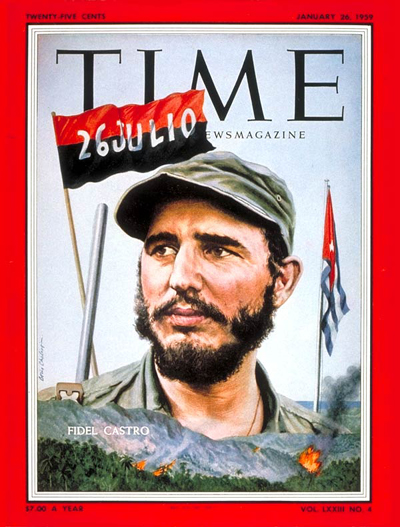
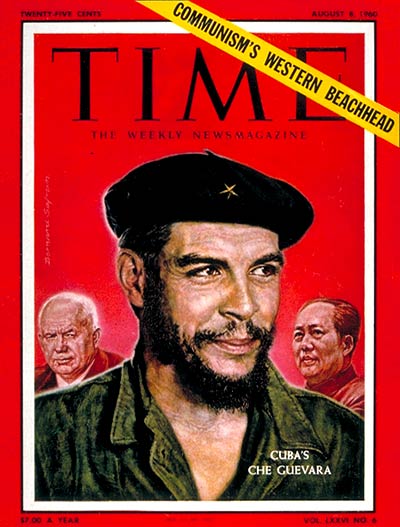
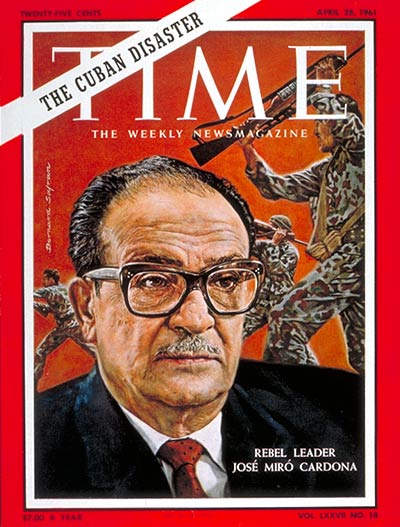


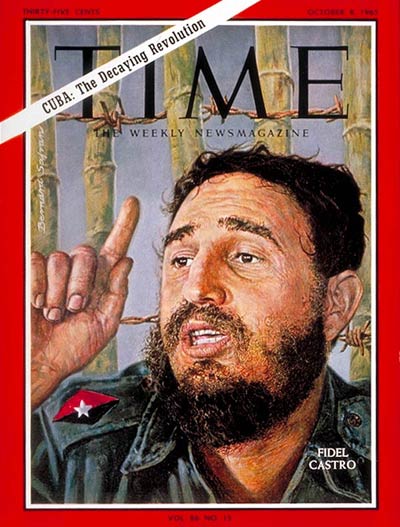
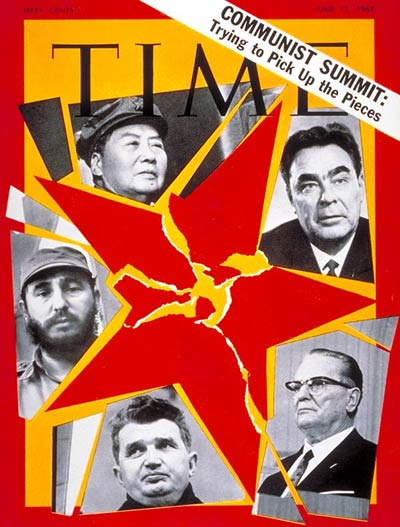
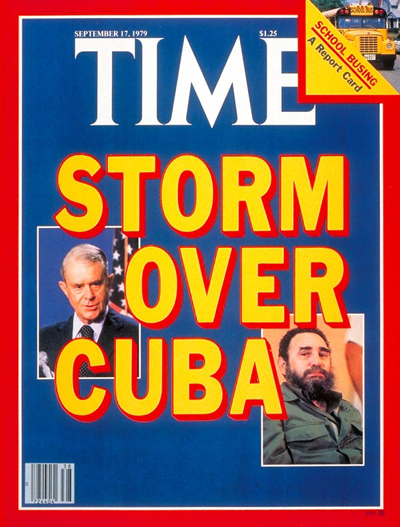
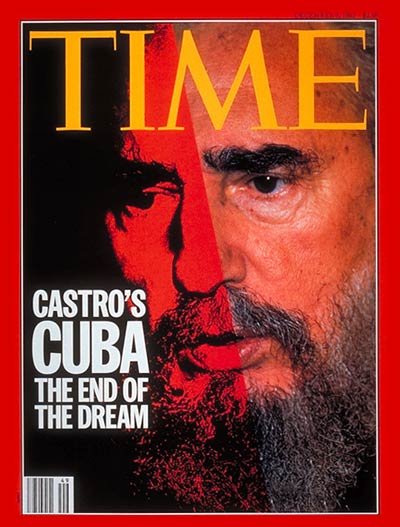
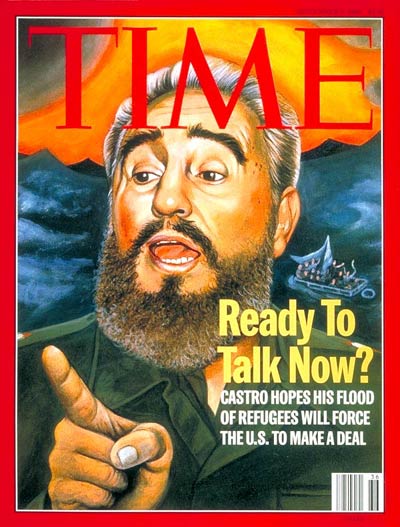

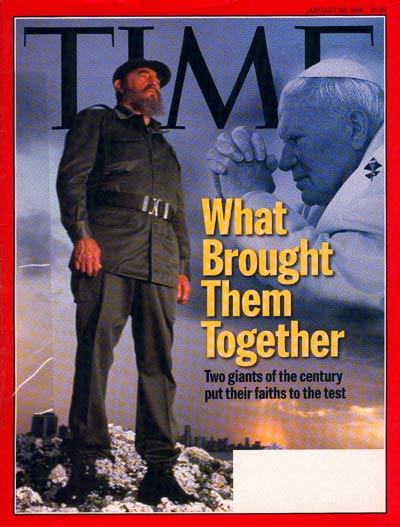
In a cover story on Jan. 26, 1959 — mere weeks later — TIME dubbed Castro “The Vengeful Visionary.”
“The executioner’s rifle cracked across Cuba last week, and around the world voices hopefully cheering for a new democracy fell still,” the story began. “The men who had just won a popular revolution for old ideals—for democracy, justice and honest government—themselves picked up the arrogant tools of dictatorship.” At the heart of the trouble was Castro:
Fidel Castro himself is egotistic, impulsive, immature, disorganized. A spellbinding romantic, he can talk spontaneously for as much as five hours without strain. He hates desks—behind which he may have to sit to run Cuba. He sleeps irregularly or forgets to sleep, living on euphoria. He has always been late for everything, whether leading a combat patrol or speaking last week to the Havana Rotary Club, where a blue-ribbon audience waited 43⁄4 hours for his arrival. Wildly, he blasted U.S. arms aid to Batista, but he paid a friendly call at 1 a.m. on the ambassador from Britain, which sold tanks and planes to Batista for nearly a year after the U.S. had stopped.
Castro has the Cuban moralistic streak in spades, showing no apparent affection for money or soft living. He considers himself a Roman Catholic but is also impressed by Patriot José Marti’s anticlerical tomes. He has to be cajoled into changing his filthy fatigue jacket. His only luxury is 50¢ Montecristo cigars.
He is full of soaring, vaguely leftist hopes for Cuba’s future but has no clear program. Other Latin American leaders trust his democratic professions, hope that his shortcomings will not bring on disorder and another dictatorship.
In short, TIME’s writers worried, he had become synonymous with the movement he led. The cult of personality he inspired was no less autocratic than Batista’s rule had been.
The young revolutionary lawyer had changed, and there remained no doubt that Cuba under Castro would not look the way many observers had hoped. The world watched warily as his power increased and, more recently, as his regime began to relax some of its stricter policies. One thing, however, never changed: wherever Castro went, eyes followed.
Read the full 1959 cover story, here in the TIME archives: The Vengeful Visionary
More Must-Reads From TIME
- The 100 Most Influential People of 2024
- The Revolution of Yulia Navalnaya
- 6 Compliments That Land Every Time
- What's the Deal With the Bitcoin Halving?
- If You're Dating Right Now , You're Brave: Column
- The AI That Could Heal a Divided Internet
- Fallout Is a Brilliant Model for the Future of Video Game Adaptations
- Want Weekly Recs on What to Watch, Read, and More? Sign Up for Worth Your Time
Write to Lily Rothman at lily.rothman@time.com